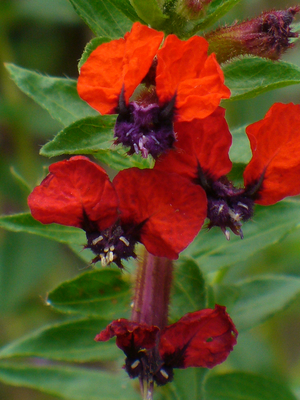Rare & Unusual Plants
Maiden's Jealousy, Showers of Gold Climber, Australian Gold Vine, Vining Galphimia, San Xing Guo
Tristellateia australasiae
Large clusters of 1" wide starry golden yellow flowers with anthers that age to a contrasting red may be produced throughout the year under warm tropical conditions. The flowers attract bees and butterflies and if pollinated they are followed by 3/4-1" wide helicopter-like samaras. Maiden's Jealousy, Tristellateia australasiae, is a naturally evergreen tropical twining woody climber with rich green foliage and purplish stems on the growth. It can be grown in the ground in areas with mild winters and can also be grown as a container plant where not hardy. Provide a full to mostly sunny site for optimum flowering. Maiden's Jealousy should be fairly tolerant of soil types as it is a component of Mangrove swamps and coastal forests in Tropical Asia, the Pacific Islands, and Australia. Item# 12026
US$17.99
Or
Quantity Exceeds Stock Level
Email Me When Ready
Cannot Ship To: CA
Maiden's Jealousy, Showers of Gold Climber, Australian Gold Vine, Vining Galphimia, San Xing Guo
Tristellateia australasiae
Mini Cart
Categories
- 2024 New Plants
- Agastache
- Angel Trumpets
- Bee Plants
- Bonsai Starter Plants
- Butterfly Plants...
- Camellia & Sasanqua Selector...
- Camellias & Sasanquas
- Cut Flowers
- Deer Resistant Plants
- Figs, Figs, Figs...
- Fragrant Plants
- Fruits & Herbs
- Gardenias
- Gingers
- Great Plant Picks for the Pacific Northwest
- Greg Grant Introductions
- Groundcovers
- Heirloom Plants
- Hibiscus...
- Honeysuckle
- Hoyas
- Hummingbird Plants
- Hydrangeas
- Indoor Plants
- Iris
- Lantanas
- Louisiana Native Plants
- Louisiana Super Plants
- Missouri Botanic Gardens Plants of Merit
- Moon Moth Garden Plants
- Native Plants
- Passionvines
- Perennials - All
- Perennials by Size Class...
- Phlox
- Plants by Flower Color...
- Plants by Foliage Color...
- Plants by Fruit Color...
- Plants for Bogs & Wet Areas
- Porterweeds
- RHS Award of Garden Merit® Plants
- Roses
- Salt Tolerant Plants
- Salvias
- Shade Tolerant Plants
- Shrubs & Trees - All
- Shrubs by Size Class...
- Songbird Plants
- Succulents & Cacti
- Texas Superstar® Plants
- Top Performers from Mt. Cuba Center Trials
- Tropical Plants
- Turks Cap
- Vines and Vine-like Plants
Information
Top Sellers
Red Firecracker Fern, Firecracker Plant, Coral Fountain Plant, Russellia
Was US$12.99US$9.99 Details
We Securely Accept
![]()

.jpg)

-1.JPG)
.JPG)

-1.JPG)
